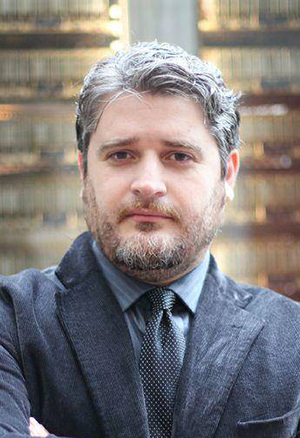When author Isaac Asimov introduced the world to the Three Laws of Robotics in his 1942 short story “Runaround”, little did he know that less than 45 years later the first non-laparoscopic robot, the Puma 560, would enter the surgical landscape. This would be followed several years later by the da Vinci robotic surgical system, now the standard robotic technique used by hospitals in the United States and many other countries when performing marginally invasive surgical procedures.
Or perhaps the visionary whose famous three laws were intended for human interactions with autonomous robots did indeed have prescient knowledge of the scientific breakthroughs that were to come. One can only wonder what Asimov would think of a surgical robotic solution that could be applied in war and disaster zones…and perhaps even one day in space.
While control, flexibility and precision are the hallmarks of the widely utilized da Vinci system, due to its bulk and need for fixed installation and a sterile, controlled temperature environment, it cannot be used in areas where it may be most needed—battlefields and natural disaster sites.
Presently, advancements are in process to bring surgical robotic application, guided by surgeons from remote locations, to battlefields and as close as the firing line. It is a methodology that has captured the attention, interest and positive reviews from the military and U.S. Department of Defense (DOD).
Dr. Darrin Frye of the DOD imparts oversight support and assistance with the research and development of Defense Health competences that will facilitate military healthcare providers in their responsibility to protect and treat those on the battlefield and in the air space. According to Dr. Frye, the present challenges inherent with evacuating the injured to treatment sites makes the prospect of surgical robotics technology of great promise and appeal to expeditionary medical and theater hospital specialists.
The product now in development marries elements of technologies that bear CE certification with a native design for field operations.
Currently, in the absence of a more effective solution, patients in war zones and disasters are triaged and transported to treatment centers for surgery. As a result, they receive only the most minimal of care during the first most critical hours following injury.
Present day robotic surgical solutions, because of their size, weight and aforementioned fixed installation and sterile environment requirements, cannot be applied at a war or other disaster site. Moreover, surgical robotics now in use do not convert from laparoscopic to open surgery functions fluidly and surgeons are required to operate in extremely close proximity to the injured.
The remote methodology soon to head to market comprises onsite containers with surgical robots and actual emergency rooms guided remotely by off-site surgeons—a superior alternative to transporting a critically wounded patient miles to a treatment center. Changes in today’s battlefields and air space have made it challenging to evacuate patients to different locations for treatment, making surgical robotics technology particularly promising to expeditionary medical and theater hospital environments.
This advanced methodology is comprised of a number of surgical units with each unit maintaining a base with one degree of freedom (DoF), an anthropomorphous robotic arm with seven DoFs; an end-effector, mounted at the arm wrist, carrying three actuators that drive the surgical tool and a three DoFs surgical tool. The first six DoFs of the arm have torque sensing. Each surgical tool is comprised of a distal component, a rod and an interface component.
The digital component serves as the actual surgical tool, with capabilities as grasper, scissors and dissector. With two rotational joints, the tool can angle its tip around two perpendicular axes and has the capability to open and close its jaws. That, in combination with movement scaling estimated to surpass the accuracy of standard surgical robots by 10 times. The learning curve to use the surgical robot is relatively easy as the tool provides heightened vision, superior navigation and quality dexterity. More than noteworthy is that fact that units are limited to less than 300 pounds for easy transport using normal military vehicles.
This proprietary work in progress is being developed with artificial intelligence, making the technology fully autonomous. Its anticipated multi-capabilities would be well suited to environments outside the surgical suite due to its sensitivity, flexibility, size and cost efficiencies.
Modular in design, this pioneering technology allows for easy and quick set-up and makes multi-quadrant procedures possible. Other salient features include its facility to perform both laparoscopic and open procedures with microsurgery precision and inclusion of sensors and software to simplify the coordination of surgical movements. Compact and light, this robotic solution can be moved from one operating site to another within minutes.
At a cost of 50% less per procedure than the standard da Vinci method, the remote technology is not only price effective, but can perform five to 10 times higher the number of procedures per tool and be used in any procedure.
The benefits of deploying life-saving artificial intelligence procedures to the battlefield, to regions hit by natural or man-made disaster and perhaps eventually to space is now beyond the “imagine” phase and entering the stringent certification process. What do you think – would Isaac Asimov be impressed or merely say, “I told you so.”







